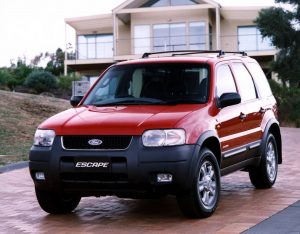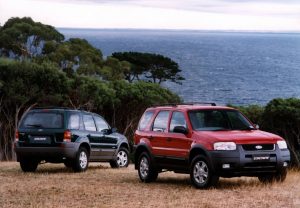Recalls: Ford Escape
Overview
Manufacturers, or importers, issue recalls for defects or faults which have the potential to cause injury. Generally, manufacturers will inform the original buyers if their vehicle is subject to a recall and of the steps required to remedy the defect or fault. Please note that the recalls below (if any) are for Australian-delivered vehicles only. Furthermore, the number of recalls should not be taken as an indication of a model’s reliability or its safety more generally.
Recalls: Ford Escape
- In October 2001, a recall was issued for certain Ford BA Escape models manufactured from 1 February 2001 to 19 September 2001 inclusive. For the affected vehicles, the union nut (locknut) which attached the fuel delivery module to the fuel tank may not have been completely engaged when installed, resulting in fuel leakage and a potential fire hazard (PRA 2001/5021).
- In February 2004, a recall was issued for certain Ford BA Escape models manufactured from 22 January 2001 to 30 October 2001. For the affected vehicles, a post within the front safety belt buckle cover could fracture, resulting in either no latch or partial latching. For the latter, the buckle tongue could be inserted into the buckle and appear to be functioning normally, though the risk of seatbelt failure remained (PRA 2004/6786).
- In November 2012, a recall was issued for Escape vehicles that were available for sale from 1 November 2001 to 1 February 2006. In these vehicles, inadequate clearance between the engine cover and the cruise control cable could cause the engine to be stuck at full power when the accelerator pedal is fully or almost-fully depressed – this could result in very high vehicle speeds and make it difficult to stop or slow the vehicle. Please note that this risk exists regardless of whether cruise control is being used or not (PRA 2012/13352).
Problems and faults: Ford Escape
Overview
This section identifies potential problems, causes and fixes based on the experiences of owners and repairers, online sources and technical service bulletins. This information is provided solely for reference purposes and AustralianCar.Reviews recommends that only properly qualified persons carry out repairs or modifications. Furthermore, the number of items below should not be taken as an indicator of a model’s reliability or the frequency with which they may occur.
To report a problem or fault to the AustralianCar.Reviews team, please use the Contact Us form. Note that AustralianCar.Reviews does not offer advice on automotive problems or disputes; such enquiries will not receive a reply. For vehicles purchased from dealers after 1 January 2011, please see our Australian Consumer Law fact sheet.
Problems and faults: Ford Escape
- For Ford Escape models fitted with the 3.0-litre V6 engine, the ‘low coolant’ warning light may illuminate because the float in the coolant recovery tank sinks; a revised float assembly was subsequently released.
- For Escape models with automatic transmissions, harsh or late upshifts may occur after the transmission has been repaired due to a problem with the turbine-shaft speed sensor.
- For automatic models, the engine may stall when coming to rest after cruising at highway speeds because the lockup torque converter fails to release.
- The air conditioning compressor front seal may leak, causing a loss of refrigerant.
- The fuel tank may fill slowly and the ‘check engine’ light may illuminate if the fuel tank vent line becomes clogged by debris or, potentially, ice. If so, the line needs to be cleared and possibly relocated to prevent recurrences.
- A whining noise from the front of the vehicle when traveling at 30-70km/h may require the half-shafts to be replaced with units that have dampers.
- Clunking or rattling noise from the front of the vehicle may be due to a problem with the power steering return line; a revised hose was subsequently released.
- A high-pitched squeaking noise from the rear suspension may be caused by the shock absorber bushings moving out of position.
- For early models, some heater cores experienced recurring failures that were attributed to electrolysis. If so, the coolant may need to be flushed and replaced, while additional ground connections to the engine may also be required.
- If the door handle was pulled while trying to unlock the door with the remote locking, the doors would not open and new door latches may need to be installed.




